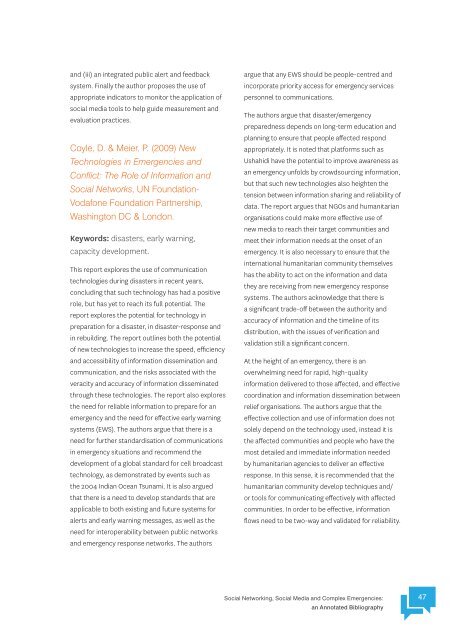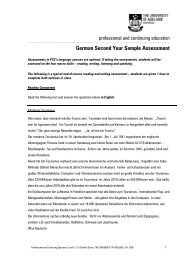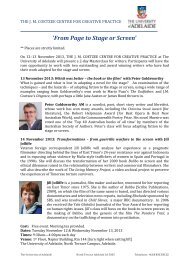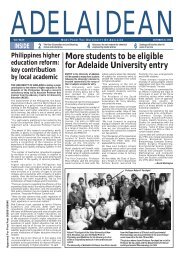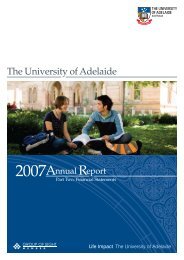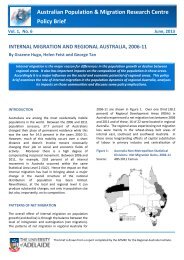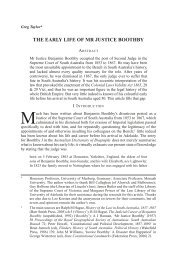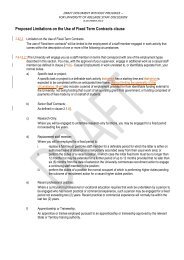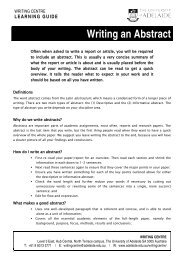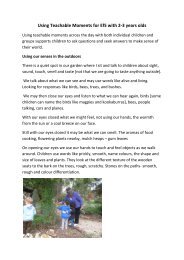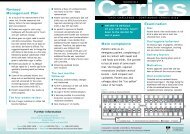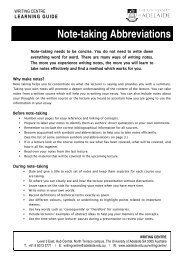Social Networking, Social Media and Complex Emergencies: an ...
Social Networking, Social Media and Complex Emergencies: an ...
Social Networking, Social Media and Complex Emergencies: an ...
Create successful ePaper yourself
Turn your PDF publications into a flip-book with our unique Google optimized e-Paper software.
<strong><strong>an</strong>d</strong> (iii) <strong>an</strong> integrated public alert <strong><strong>an</strong>d</strong> feedback<br />
system. Finally the author proposes the use of<br />
appropriate indicators to monitor the application of<br />
social media tools to help guide measurement <strong><strong>an</strong>d</strong><br />
evaluation practices.<br />
Coyle, D. & Meier, P. (2009) New<br />
Technologies in <strong>Emergencies</strong> <strong><strong>an</strong>d</strong><br />
Conflict: The Role of Information <strong><strong>an</strong>d</strong><br />
<strong>Social</strong> Networks, UN Foundation-<br />
Vodafone Foundation Partnership,<br />
Washington DC & London.<br />
Keywords: disasters, early warning,<br />
capacity development.<br />
This report explores the use of communication<br />
technologies during disasters in recent years,<br />
concluding that such technology has had a positive<br />
role, but has yet to reach its full potential. The<br />
report explores the potential for technology in<br />
preparation for a disaster, in disaster-response <strong><strong>an</strong>d</strong><br />
in rebuilding. The report outlines both the potential<br />
of new technologies to increase the speed, efficiency<br />
<strong><strong>an</strong>d</strong> accessibility of information dissemination <strong><strong>an</strong>d</strong><br />
communication, <strong><strong>an</strong>d</strong> the risks associated with the<br />
veracity <strong><strong>an</strong>d</strong> accuracy of information disseminated<br />
through these technologies. The report also explores<br />
the need for reliable information to prepare for <strong>an</strong><br />
emergency <strong><strong>an</strong>d</strong> the need for effective early warning<br />
systems (EWS). The authors argue that there is a<br />
need for further st<strong><strong>an</strong>d</strong>ardisation of communications<br />
in emergency situations <strong><strong>an</strong>d</strong> recommend the<br />
development of a global st<strong><strong>an</strong>d</strong>ard for cell broadcast<br />
technology, as demonstrated by events such as<br />
the 2004 Indi<strong>an</strong> Oce<strong>an</strong> Tsunami. It is also argued<br />
that there is a need to develop st<strong><strong>an</strong>d</strong>ards that are<br />
applicable to both existing <strong><strong>an</strong>d</strong> future systems for<br />
alerts <strong><strong>an</strong>d</strong> early warning messages, as well as the<br />
need for interoperability between public networks<br />
<strong><strong>an</strong>d</strong> emergency response networks. The authors<br />
argue that <strong>an</strong>y EWS should be people-centred <strong><strong>an</strong>d</strong><br />
incorporate priority access for emergency services<br />
personnel to communications.<br />
The authors argue that disaster/emergency<br />
preparedness depends on long-term education <strong><strong>an</strong>d</strong><br />
pl<strong>an</strong>ning to ensure that people affected respond<br />
appropriately. It is noted that platforms such as<br />
Ushahidi have the potential to improve awareness as<br />
<strong>an</strong> emergency unfolds by crowdsourcing information,<br />
but that such new technologies also heighten the<br />
tension between information sharing <strong><strong>an</strong>d</strong> reliability of<br />
data. The report argues that NGOs <strong><strong>an</strong>d</strong> hum<strong>an</strong>itari<strong>an</strong><br />
org<strong>an</strong>isations could make more effective use of<br />
new media to reach their target communities <strong><strong>an</strong>d</strong><br />
meet their information needs at the onset of <strong>an</strong><br />
emergency. It is also necessary to ensure that the<br />
international hum<strong>an</strong>itari<strong>an</strong> community themselves<br />
has the ability to act on the information <strong><strong>an</strong>d</strong> data<br />
they are receiving from new emergency response<br />
systems. The authors acknowledge that there is<br />
a signific<strong>an</strong>t trade-off between the authority <strong><strong>an</strong>d</strong><br />
accuracy of information <strong><strong>an</strong>d</strong> the timeline of its<br />
distribution, with the issues of verification <strong><strong>an</strong>d</strong><br />
validation still a signific<strong>an</strong>t concern.<br />
At the height of <strong>an</strong> emergency, there is <strong>an</strong><br />
overwhelming need for rapid, high-quality<br />
information delivered to those affected, <strong><strong>an</strong>d</strong> effective<br />
coordination <strong><strong>an</strong>d</strong> information dissemination between<br />
relief org<strong>an</strong>isations. The authors argue that the<br />
effective collection <strong><strong>an</strong>d</strong> use of information does not<br />
solely depend on the technology used, instead it is<br />
the affected communities <strong><strong>an</strong>d</strong> people who have the<br />
most detailed <strong><strong>an</strong>d</strong> immediate information needed<br />
by hum<strong>an</strong>itari<strong>an</strong> agencies to deliver <strong>an</strong> effective<br />
response. In this sense, it is recommended that the<br />
hum<strong>an</strong>itari<strong>an</strong> community develop techniques <strong><strong>an</strong>d</strong>/<br />
or tools for communicating effectively with affected<br />
communities. In order to be effective, information<br />
flows need to be two-way <strong><strong>an</strong>d</strong> validated for reliability.<br />
<strong>Social</strong> <strong>Networking</strong>, <strong>Social</strong> <strong>Media</strong> <strong><strong>an</strong>d</strong> <strong>Complex</strong> <strong>Emergencies</strong>:<br />
<strong>an</strong> Annotated Bibliography<br />
47


